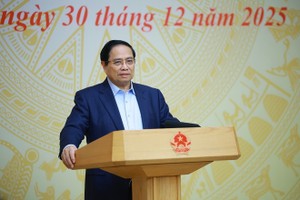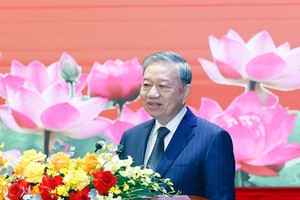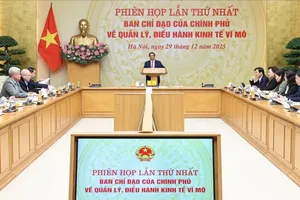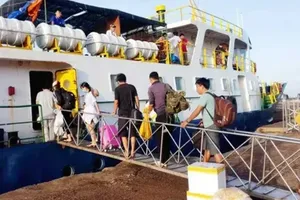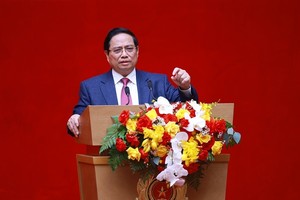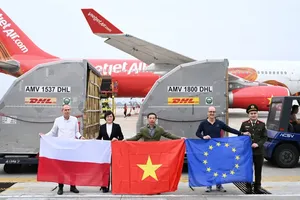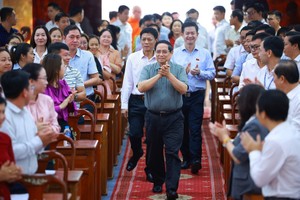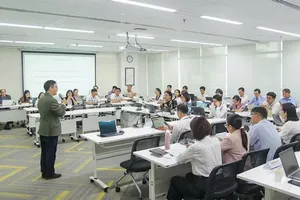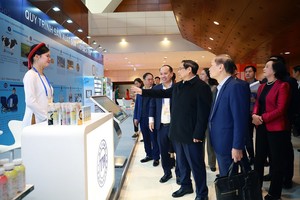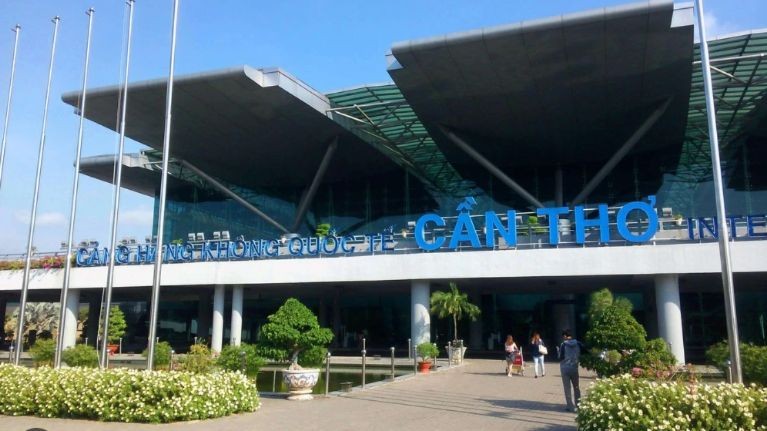
Following a temporary suspension of some routes, international airports in Can Tho and Phu Quoc are bustling once again, with the likes of Vietnam Airlines, Bamboo Airways, and Vietjet Air introducing new or resumed flights, both domestically and internationally, throughout the day. This resurgence brings hope for the next development phase of the “Sky gates of the Mekong Delta."
Can Tho International Airport has unveiled two new international routes, namely Can Tho - Taiwan (China) with three flights per week and Can Tho - Incheon (South Korea) with four weekly flights. At the same time, it maintains and resumes domestic routes linking Can Tho to Hanoi, Hai Phong, Thanh Hoa, Vinh, Da Nang, Nha Trang, Quy Nhon, Da Lat, Phu Quoc, and Con Dao.
Phu Quoc International Airport, once teeming with approximately 70 daily flights, has regained its vibrancy after a period of route reductions. New international routes are continuously being introduced, aligning with the robust acceleration of tourism on the pearl island. Jin Air from South Korea has initiated a direct flight from Seoul to Phu Quoc, marking the sixth direct route from this country, with active participation from major Korean airlines such as Korean Air, Jeju Air, and Jin Air.
Phu Quoc is on the rise, surpassing Da Nang and Nha Trang to become a favored destination among South Korean tourists. Currently, the island welcomes around 2,000-2,500 international visitors daily, with more than 50 percent being South Korean tourists. Phu Quoc International Airport also handles over 30 domestic flights per day. Additionally, the airport in Rach Gia City operates flights to Ho Chi Minh City, while Ca Mau Airport serves two routes to Hanoi and Ho Chi Minh City.
As of now, air travel remains the preferred mode of transportation, offering the advantages of speed, safety, and luxury. More and more people are opting for air travel. According to statistics, in 2023, over 10.9 million out of 12.6 million tourists chose air travel, accounting for 86.5 percent of the total.
The positive developments in attracting investments, fostering economic growth, boosting trade, and promoting tourism in the Mekong Delta region over the past year have resulted in a growing demand for travel through the airports in the Mekong Delta. Numerous events and festivals have played a constructive role, including the Vietnam International Rice Festival, the Ao Ba Ba Festival in Hau Giang, Shrimp Festival in Ca Mau, Flower Festival in Sa Dec, Coconut Festival in Ben Tre, Mango Festival in Dong Thap, Ngo Boat Race Festival in Soc Trang, and Fruit Festival in Tien Giang. Notably, the professionally organized and impressive events by corporations on Phu Quoc Island have significantly stimulated tourism demand, leading to an increased use of air travel among tourists.
The opening of new flight routes, increased flight frequencies, intensified promotional efforts, market enlargement, and the implementation of price incentives for airlines utilizing support services at airports are driving the growth of airports in the Mekong Delta. However, these expectations are intertwined with challenges. It is the responsibility of airlines to identify customer segments and offer tailored services.
While airports contribute to passenger growth through quality infrastructure and ground services, fostering aviation demand is a government responsibility. Aviation services must continually enhance convenience, safety, quality, and affordability. Planning policies, strategies, and investment decisions for developing infrastructure and connecting transportation methods at the national, regional, and local levels are crucial for attracting airlines and air travelers.
The sustained growth of flight routes should be grounded in the aviation demand fueled by the regional economic development, active investment endeavors, bustling commercial activities, and the appeal of the tourism sector. The ascent of airports in the Mekong Delta reflects not only the strength of the aviation industry but also the overall development of the economy, society, trade, and tourism in the Mekong Delta region, creating a "demand" force and propelling the "supply" force forward.
Therefore, it is imperative to foster development not only through the efforts of airports and airlines but also through collaborative initiatives and concerted efforts from central and local management agencies, ground service providers, flight management entities, passengers, media organizations, and the community.
In front of the runway at Can Tho International Airport, the lengths and speeds of flight routes are influenced not only by physical space and aircraft speed but also by the regional competitive capabilities, the extent of responsibility, awareness, and the increased professionalism of the involved parties.
